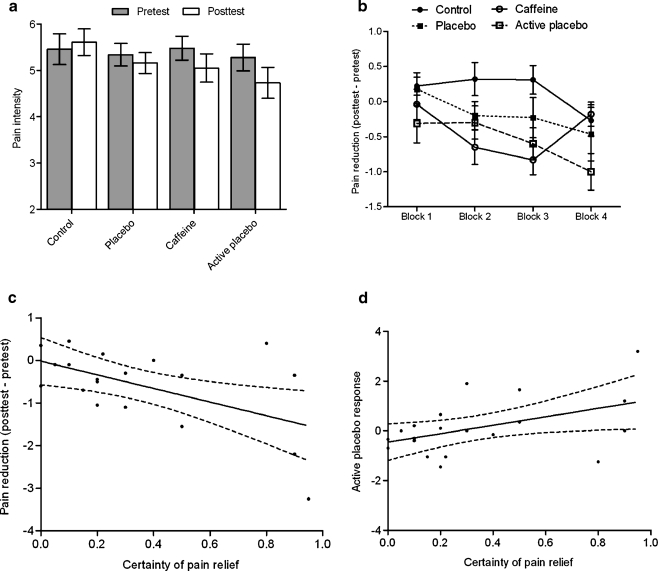Fig. 2.
Pain report. a Mean pain intensity (± SEM) across conditions. Subjects reported larger reductions in pain after 4 mg/kg caffeine (caffeine, active placebo) compared to after 0 mg caffeine (control, placebo). b Pain reduction displayed as the difference scores (posttest–pretest) for all four blocks of the posttest and pretest (mean ± SEM). A significant interaction between drug, information and block was observed towards the end. This was due to the difference between the active placebo and caffeine conditions. A steady increase in pain relief was observed in the active placebo condition, whereas pain relief was disrupted in the caffeine condition. c Certainty of pain relief correlated with pain reduction in the active placebo condition (r = −.55, p = .012). d Active placebo responding (difference score active placebo − difference score caffeine) (positive scores indicate larger reduction in pain in the active placebo condition) correlated with certainty of pain relief (r = 46, p = .039)

